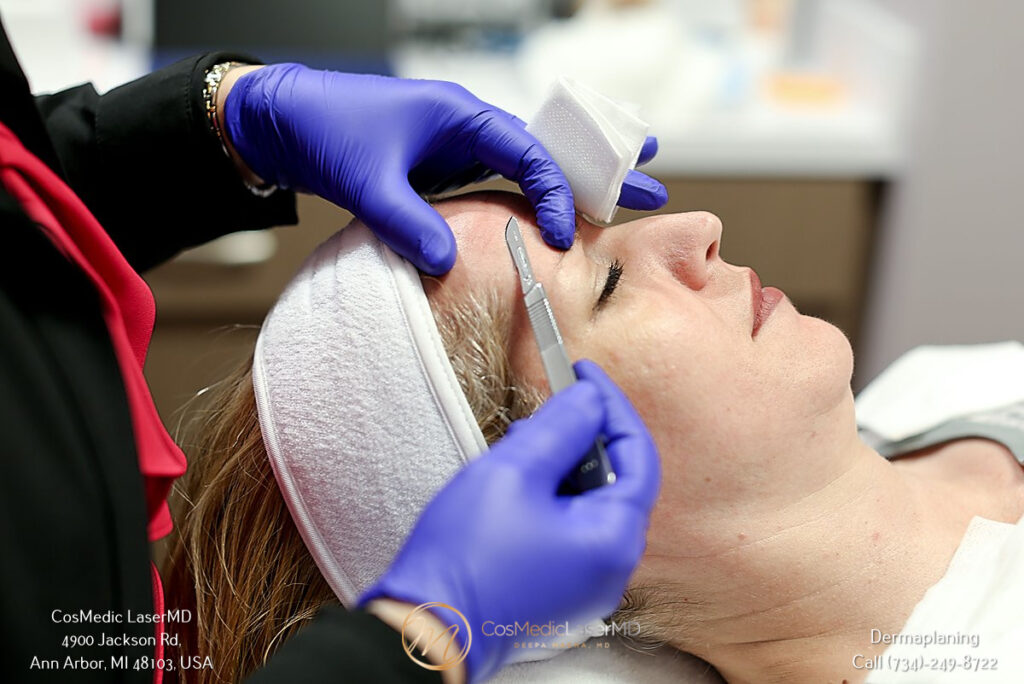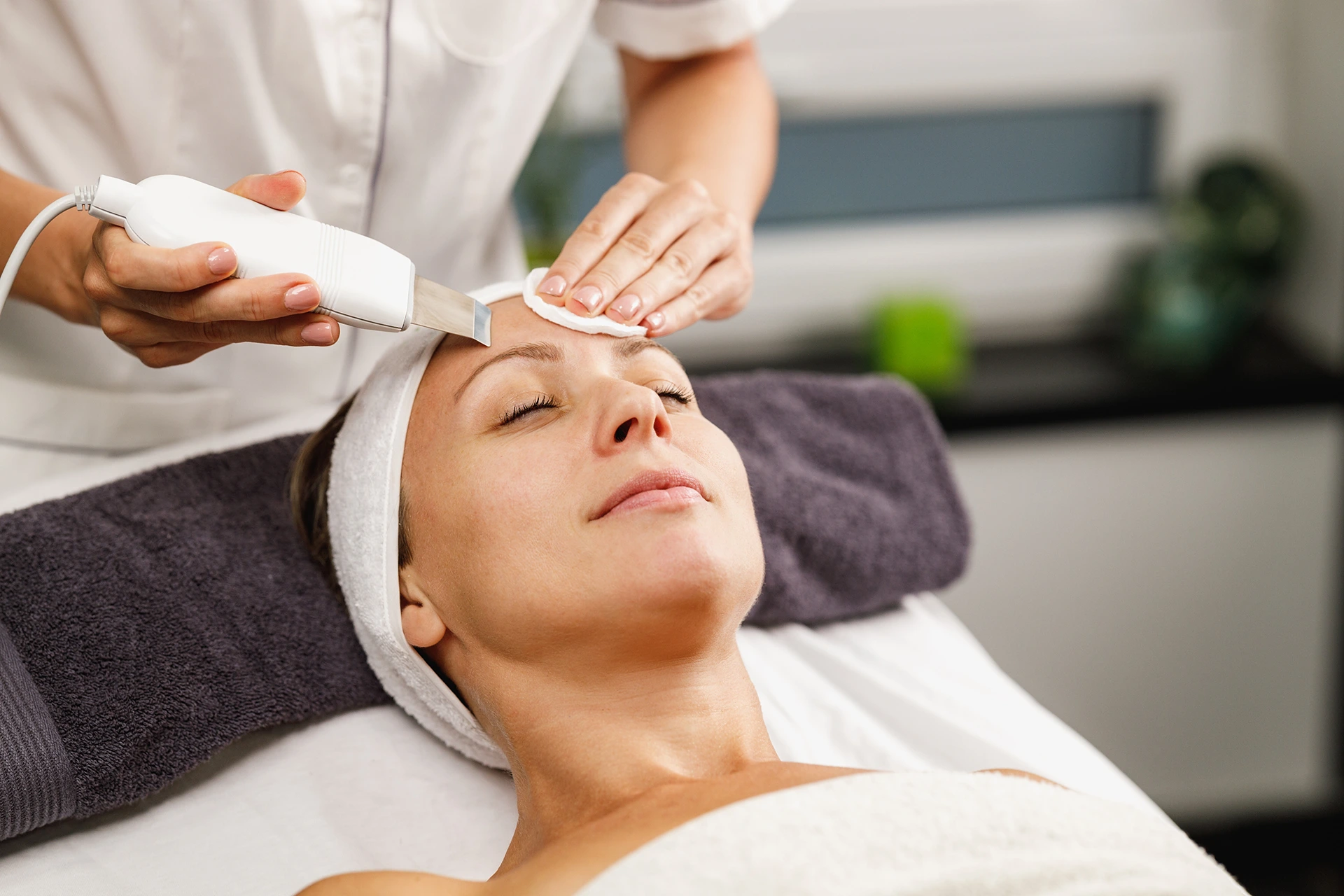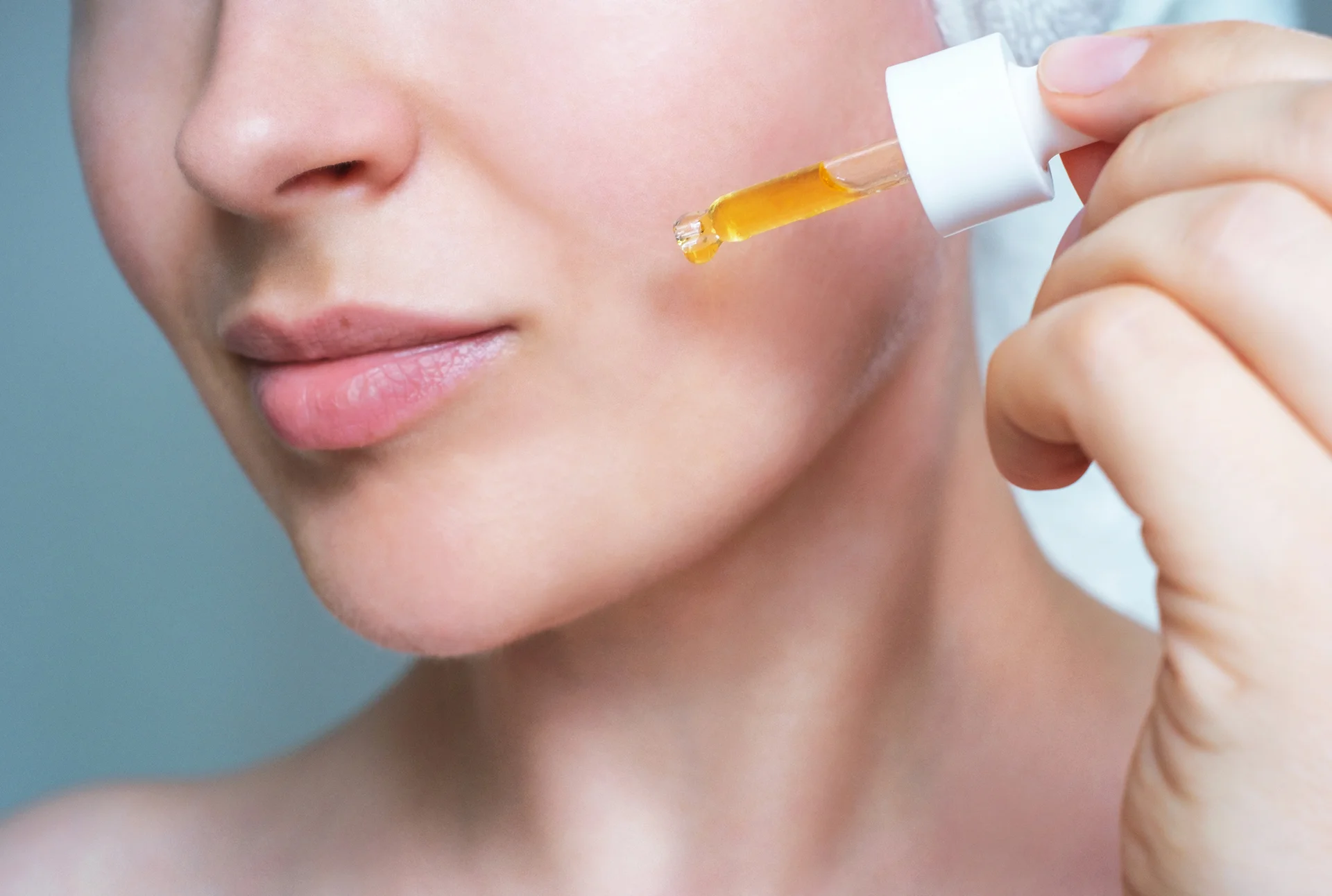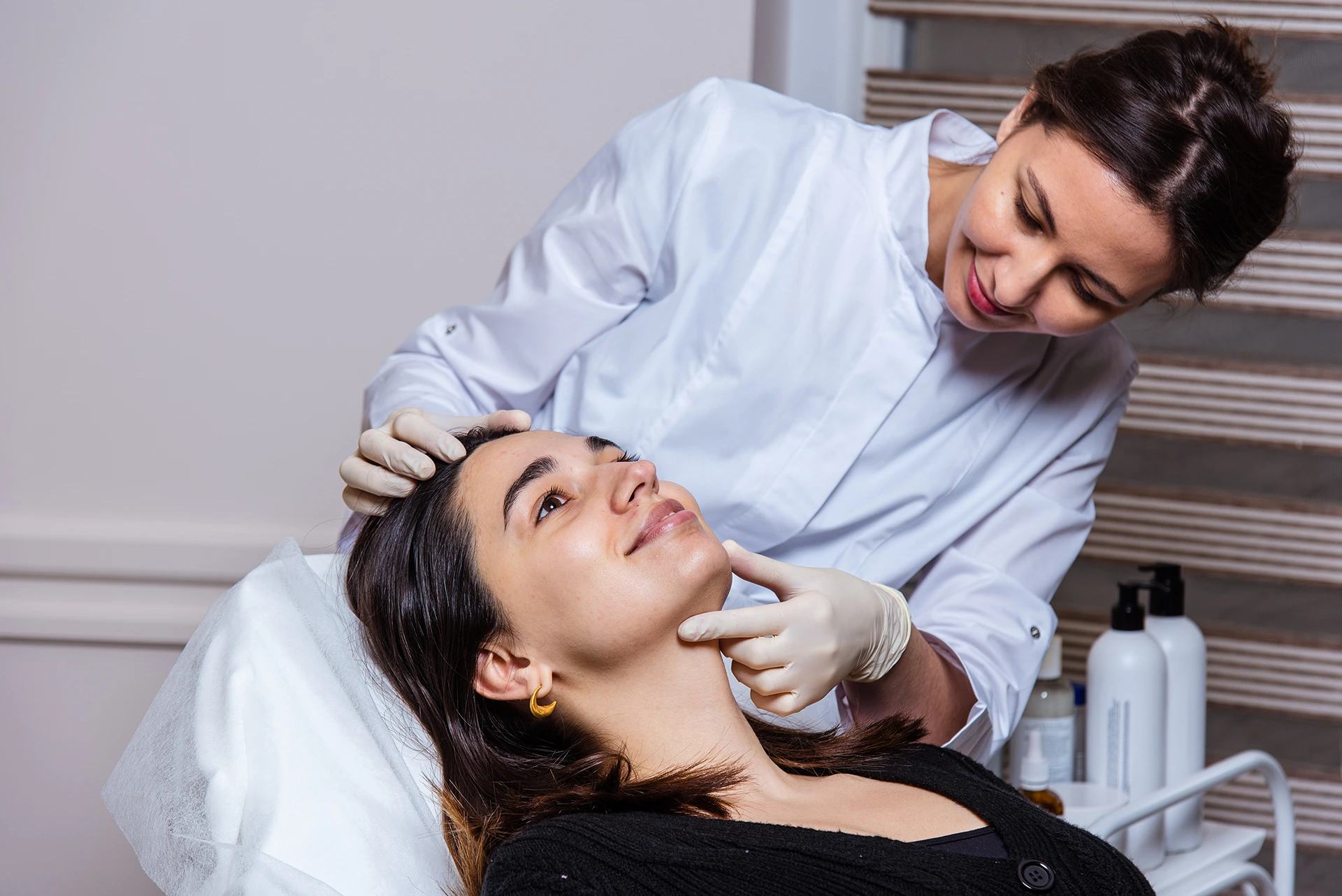Dermaplaning, a skin treatment that uses a surgical scalpel to gently shave off dead skin cells and vellus hairs, has become increasingly popular over the last decade. This exfoliating procedure reveals smoother, brighter skin and allows skincare products to penetrate better.
However, for those with acne-prone skin, dermaplaning may be risky. In fact, a clear majority estheticians and dermatologists believe dermaplaning can worsen breakouts.
But does active acne mean you can’t get a dermaplaning facial? Or are there safe ways to reap its benefits even with pimples and breakouts?
To dermaplane or not to dermaplane over acne – that is the question many skincare enthusiasts find themselves asking. Learn everything you need to know by reading on.
Should You Dermaplane Over Active Acne?
The first question those with acne may have is whether dermaplaning should be performed over active breakouts. Most skincare experts advise waiting until acne is cleared before dermaplaning.
- The friction and pressure applied over inflamed pimples or cystic acne can exacerbate swelling and irritation. Popped pimples, open comedones, and broken skin are also susceptible to infection when scraped with a blade.
- In contrast, dermaplaning after acne heals can help improve the appearance of scars and discoloration. The removal of dead skin cells reveals fresher, smoother skin below the surface.
- Dermaplaning may temporarily improve the appearance of acne scars by removing dead skin cells, but it does not treat or reduce acne scarring long-term. Other treatments like microneedling or laser resurfacing are more effective for acne scar reduction.
Is it ever safe to dermaplane over mild non-inflamed acne then?
The general consensus is this: Dermaplaning should be avoided if there is still an active breakout. This applies even to non-inflammatory or mild acne, as there is still a risk of spreading bacteria and worsening breakouts.
It is safest to wait until the skin is completely clear before undergoing the said treatment.
What Are the Risks of Dermaplaning Over Acne?
Dermaplaning over active acne breakouts poses certain risks.
- The first is increased inflammation and irritation. As the small surgical blade scrapes over angry red pimples or cysts, it can worsen swelling and sensitivity. Any pressure or friction applied to inflamed acne is likely to aggravate it.
- Additionally, the blade itself can transfer bacteria between open blemishes, causing further breakouts. Proper sanitization of dermaplaning tools is essential to prevent the spreading of infection on acneic skin.
- Some estheticians worry that removing the top protective layer of the skin via dermaplaning while acne bacteria is present below may lead to more frequent breakouts. However, studies show mixed results on whether the procedure increases acne itself.
- More general risks apply to those with extra-sensitive skin. There’s also the possibility of cuts due to improper technique causing infections.
When Is It Safest to Dermaplane with Acne?
The safest time to dermaplane if you have acne is when breakouts are minimal and inflammation is low. If any pimples or cysts are present, it’s best to wait until they have fully healed. You want to avoid dermaplaning over raw open wounds or irritated lesions at all costs.
Key points to remember are:
- It should not be performed on active, inflamed acne as it can spread bacteria and cause more breakouts. However, dermaplaning can still be performed on clear areas of the face avoiding active pimples. Exfoliating away dead skin cells and peach fuzz may actually help prevent future acne flare ups.
- Those with non-inflamed comedonal acne, whiteheads, or just 1-2 small pimples may still be good candidates but should proceed cautiously.
Never dermaplane inflamed, painful acne sores, or severe inflammatory cystic acne.
What About Other Exfoliating Treatments?
While manual dermaplaning uses a handheld blade, some acne sufferers may prefer chemical exfoliation. Alpha hydroxy acids (AHA) provide benefits but should be used sparingly due to the risk of irritation. Salicylic acid (BHA) also penetrates pores to dissolve debris and oil.
These chemical exfoliants may be less irritating than dermaplaning for some reactive acneic skin types. However, dermaplaning removes vellus hair more consistently than superficial chemical peels. Those with particularly hairy peach fuzz may benefit more from occasional dermaplaning between acid treatments.
A combined approach using AHAs or BHAs regularly in a routine while also getting the occasional dermaplaning facial allows for both deep exfoliation and vellus hair removal. It’s best to avoid overlapping the two treatments, though, and space them at least 4-6 weeks apart to prevent sensitivity.
Precautions When Dermaplaning with Acne

If you choose to get dermaplaning over mild acne, proper precautions are necessary. Estheticians should use a fresh sterile blade and sanitize the face first with an antimicrobial cleanser to prevent bacteria from spreading. A gentle technique with minimal pressure is vital when dermaplaning around acne.
Post-procedure skincare also helps minimize negative reactions. Refrain from using any irritating actives like retinol, benzoyl peroxide, or vitamin C immediately after dermaplaning acneic skin. Stick to soothing ingredients like aloe, centella, or green tea instead.
Avoid picking at the skin and wear SPF 30+ daily after dermaplaning to protect fresh skin. If irritation occurs, apply a mild hydrocortisone cream. Most importantly, be patient for results and don’t over-exfoliate with repeated treatments too soon.
See a Doctor First for Mild or Severe Acne
Those with moderate to severe inflammatory cystic acne are likely better candidates for prescription treatments and medications. A dermatologist can assess your particular type of acne and determine the best solutions, whether topical or oral.
Professional vs At-Home Dermaplaning for Acne
While dermaplaning can be done safely at home, professional dermaplaning is highly recommended for acne-prone skin. Here’s a comparison of the pros and cons of professional and at-home dermaplaning:
| At-Home Dermaplaning | Professional Dermaplaning |
| Difficult to ensure proper blade sterilization | Follows thorough sanitization protocols but protection from infections is not 100% guaranteed |
| Disinfecting razors minimizes bacteria transfer but is not foolproof | Uses fresh disposable blades for each client |
| Ideal to use a new blade each time | Undergoes specialized training in various techniques |
| Can help lift vellus hairs and gently exfoliate between treatments | Recommended for acne-prone skin due to sanitization procedures |
| Needs to invest in high-quality facial dermaplaning razor to reduce irritation | Performed by licensed estheticians |
| Advised to proceed with care and stop if any discomfort occurs | Proper clinical protocols prevent spreading breakouts |
While dermaplaning acne-prone skin has risks like infection and further irritation, the right approach helps reap beautiful rewards.
With proper sanitization, gentle technique, and ideal timing between treatments, those with mild to moderate acne tend to achieve smoother, glowing skin.
Incorporating dermaplaning as a supplementary treatment after acne healing can reduce the appearance of scars.
Get Personalized Guidance on Dermaplaning for Your Skin Type

By carefully considering the precautions and aftercare required, acne sufferers can safely improve their skin’s texture with dermaplaning. While severe active inflammatory cystic acne may not be suitable for dermaplaning, those with mild comedonal acne can likely benefit.
Always consult with your chosen skincare expert first and customize the approach based on your unique skin. With the right procedure, your complexion can emerge renewed.
The dermaplaning specialists at CosMedic LaserMD offer complimentary consultations to determine if this rejuvenating treatment is right for your skin. Performed by licensed medical estheticians, CosMedic LaserMD adheres to the highest clinical-grade protocols for sanitization and safety.
Schedule a consultation now to learn about dermaplaning as a possible option.







